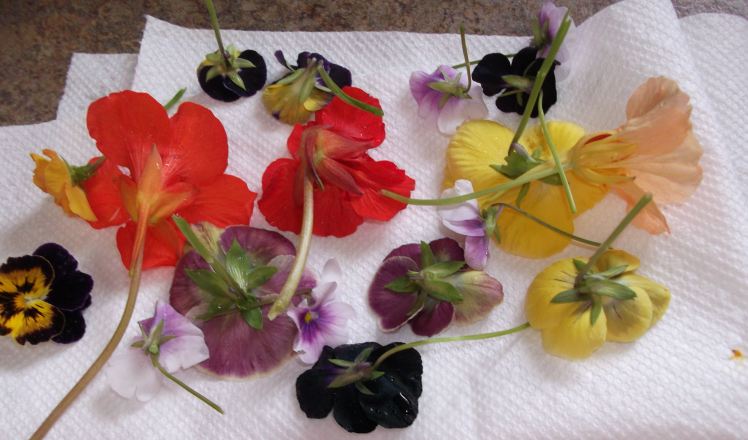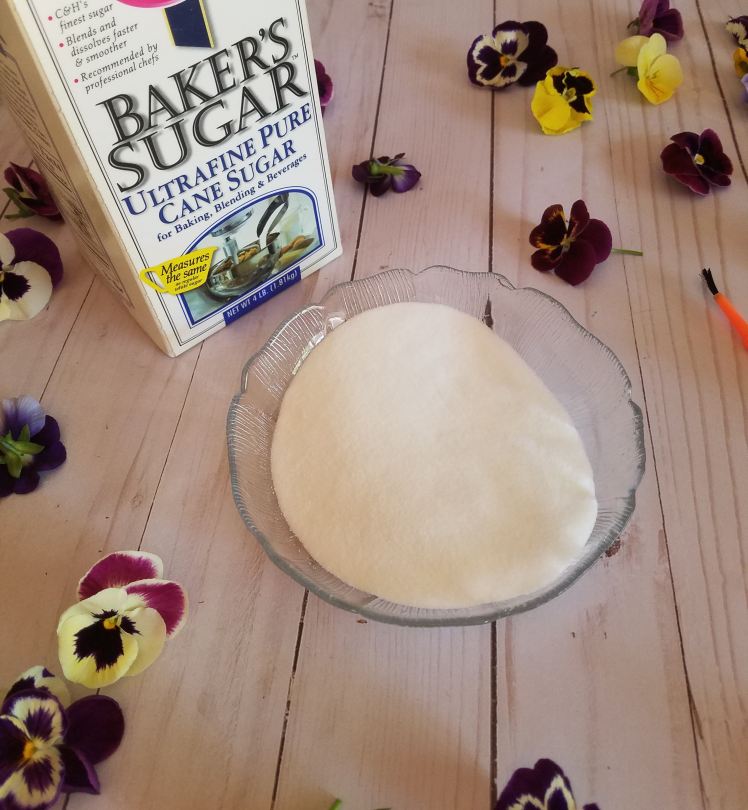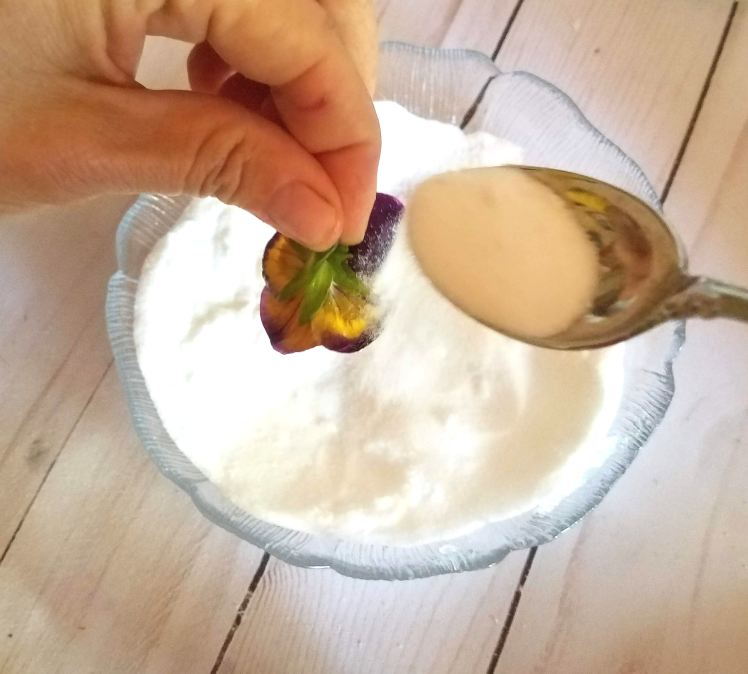One of my favorite ways to preserve a bounty of colorful edible flowers is by candying them. Eat them on their own or use them as a beautiful topping to desserts. This method works well with just about any edible flowers or leaves. I particularly love candied pansies, violas, nasturtiums, anise hyssop and mint.
Candied flower recipes often use egg whites as the binding agent, but there’s just enough salmonella associated with eggs that many people shy away from using them raw. I love this version from Bountiful Container because it uses a safer alternative: unflavored gelatin. Another reason I love this method is that I can keep the unused gelatin in the refrigerator for a little while for future use.

Candied Flowers
1 package unflavored gelatin (¼ oz)
¼ C cold water
¾ C boiling water
1 C sugar (either granulated or ultrafine baking sugar)
Gently rinse flowers, if needed, and spin them in a salad spinner or gently pat with towels until completely dry.
Pour cold water into a small bowl and sprinkle the gelatin over the cold water. Allow it to soften for about 3 minutes, then add the boiling water and stir until dissolved.
Chill mixture to about room temperature. Pour sugar into a shallow bowl.
Use a small paintbrush to gently coat the tops and bottoms of each flower with the gelatin mixture.
Immediately sprinkle both sides of the flower with sugar and gently shake off excess. Place them on parchment paper or waxed paper to dry.
Dry the flowers overnight (or longer) in a cool, dry room. To speed the drying process, bake them at a low temperature (around 170-200 degrees F) just until they are dried out.
The flowers will stay crisp stored in an airtight container, or they can be frozen until used (they may require drying again after thawing). Store any unused gelatin in the refrigerator for a week or two and warm it to room temperature before using. Enjoy!
Step by Step Details
Gently rinse flowers, if needed, and pat until completely dry. I pressed some overnight between paper towels with some weight on top. I found the flattened flowers were easier to work with.


Prepare the gelatin mixture and the bowl of sugar. I have used both superfine/ultrafine baking sugar as well as regular granulated sugar. Both work well, but granulated gives a slightly coarser coating.


Use a small paintbrush to gently coat the tops and bottoms of each flower with the gelatin mixture.
Don’t dunk the flower into the gelatin thinking it’s a good shortcut. It’s not. It will saturate the flower and weigh it down. Plus, if the gelatin is still too warm it will wilt the flower.
Learn from my mistakes and just use the paintbrush.

Sprinkle sugar over the flower – both top and bottom – and gently shake off excess.
Don’t press the flower into the sugar thinking it’s a good shortcut. It’s not. The sugar will clump and you’ll end up with globs of gelatin in the sugar mixture.


Place them on parchment paper, waxed paper or silicone baking mats to dry.
Dry the flowers overnight in a cool, dry room. Depending on humidity, temperature and how “wet” the flowers are, it will likely take at least overnight but may even take days until they are completely dry.
To speed the drying process, bake them at a low temperature (around 170-200 degrees F) but only just until they are dried out.



Eat a few now (you’ve earned it!) and save the rest for desserts or garnishes. Store them in an airtight container (keeps them crisp) or freeze them (but they may require drying again after thawing).
Store any unused gelatin in the refrigerator for about two weeks max. Any longer and you may see some mold spots starting.
I loved the detailed tutorial, thank you!👍🏼🎂❤️
LikeLiked by 1 person
Very helpful tutorial. I’m excited to try this!
LikeLike